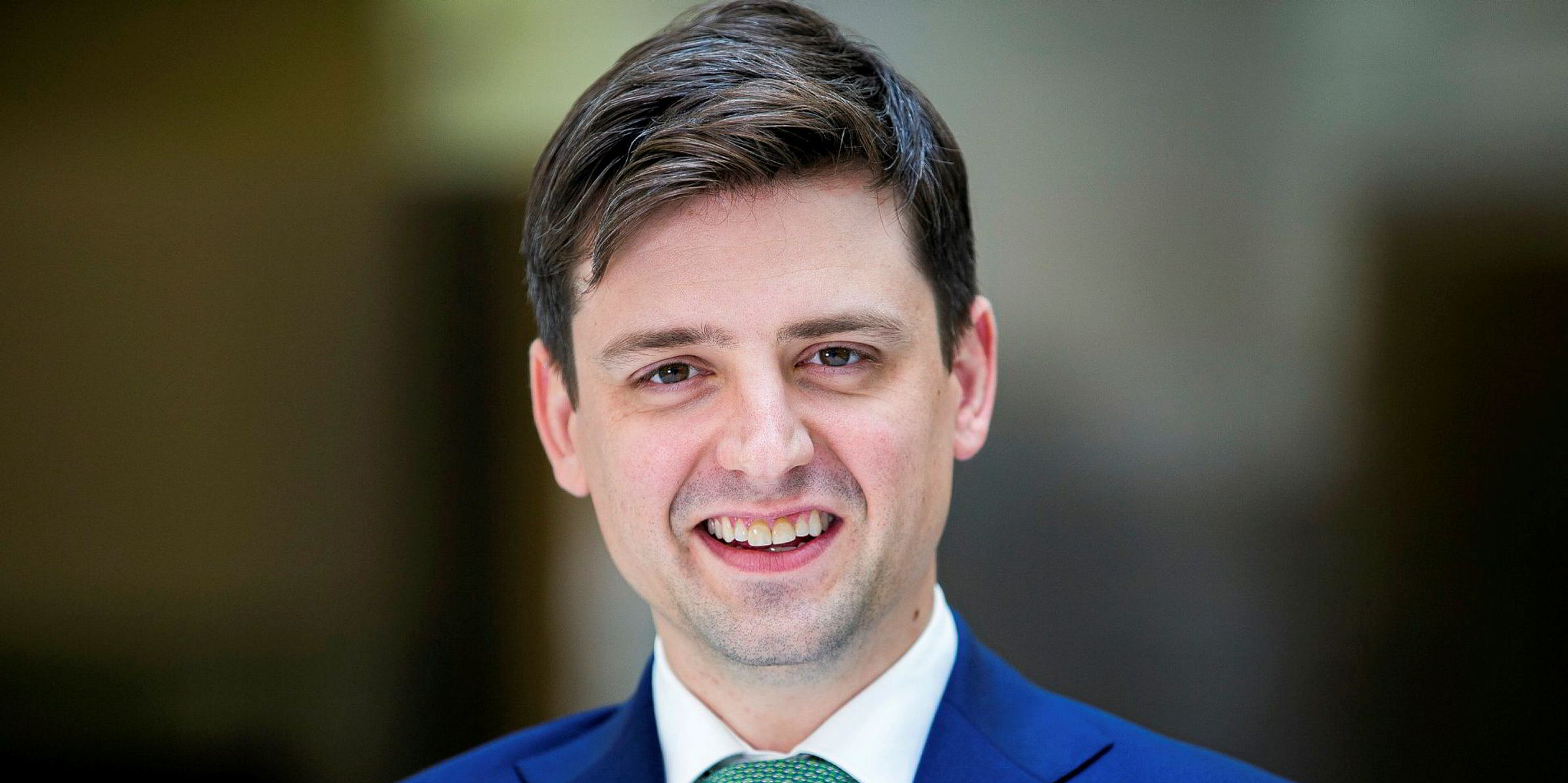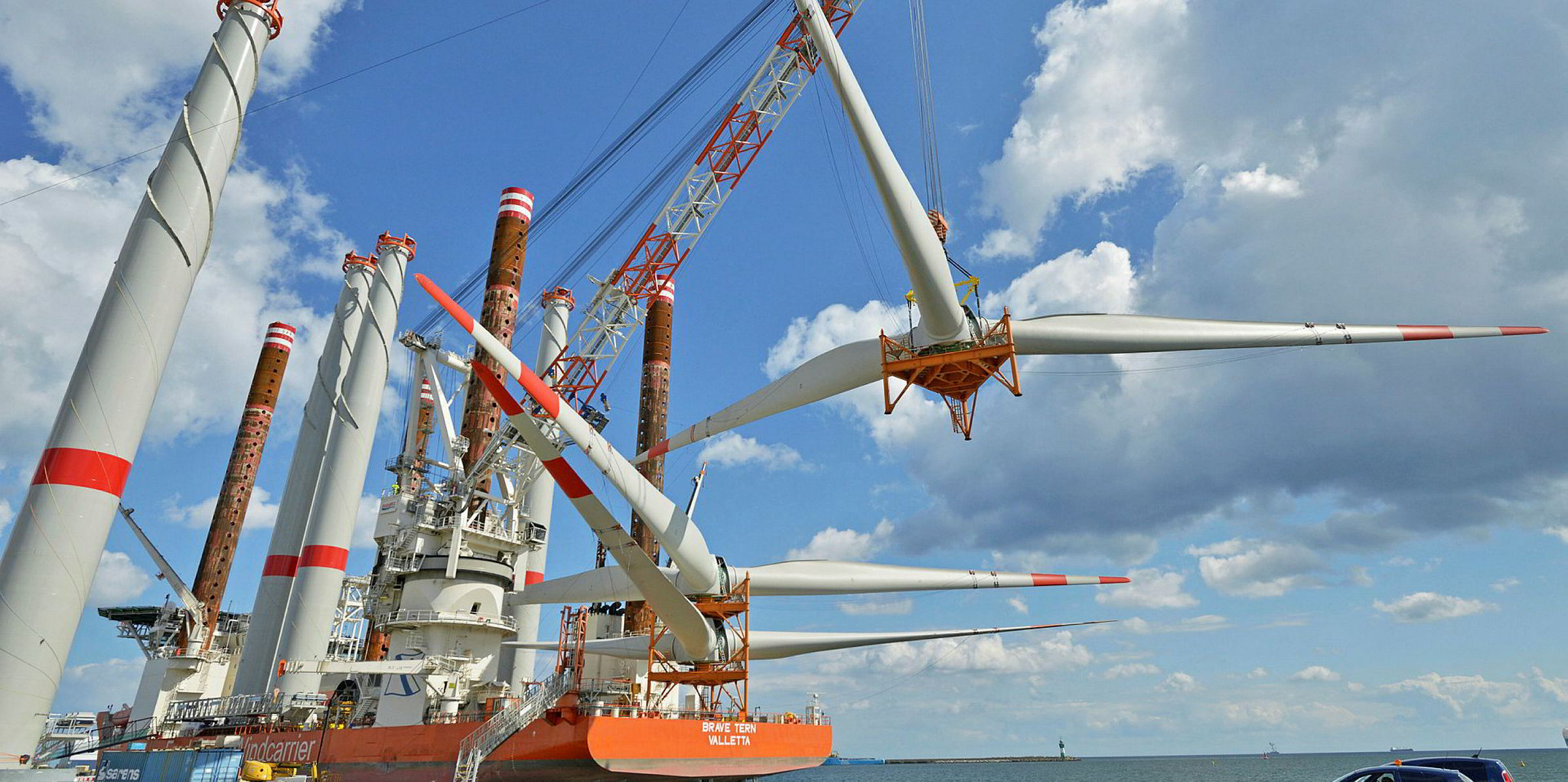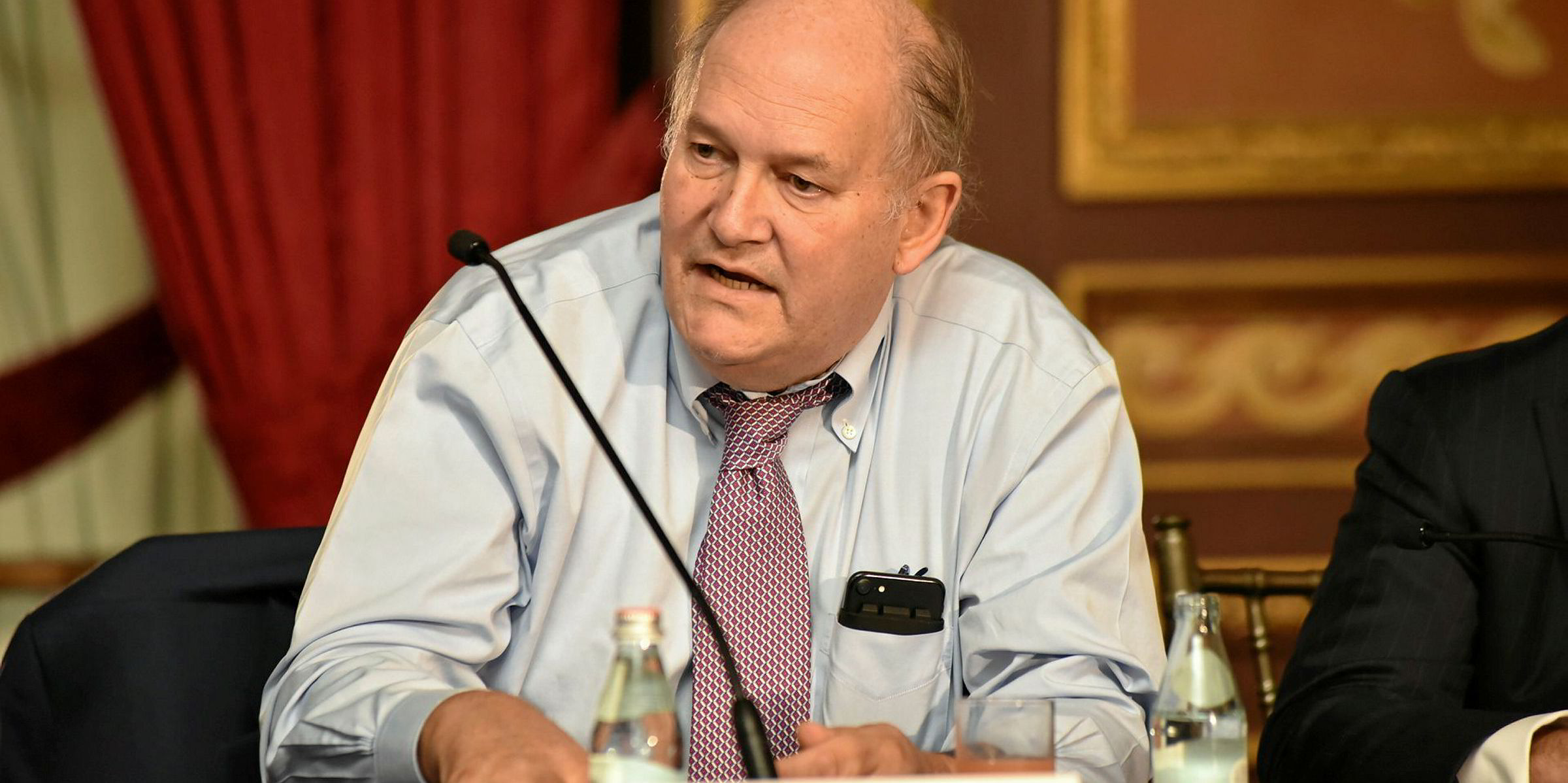Offshore wind contractors are missing out on lucrative supply deals for turbines because there are not enough installation ships in the market.
As interest in the sector intensifies, there is still a gap between wind-turbine installation vessel (WTIV) supply and the needs of energy companies and manufacturers, a webcast organised by Clarksons Platou Securities was told.
David Matthews, GE's sales director for wind and renewables in Northern Europe, said one of the first things turbine makers do is consult the shipping industry to talk about specifications.
"These turbines are quite delicate," said the manufacturing executive, whose company is a major player in the renewables sector.
"They are incredibly robust when in place, but, from the quayside to the foundation, you have to be very careful with them. You don't want to see too many accelerations or too many bumps."
Distinct lack of ships
And he added that there is a lack of vessels in the market after a construction pause by vessel owners.
"They've been trying to squeeze as much as possible out of their existing fleet, which is totally understood," Matthews said.
"The new vessels we're hearing about now are very welcome, but there aren't enough of them."
He revealed that GE has even lost a project it intended to bid on because the company could not find an appropriate vessel.
"So if we can't secure the right vessel within the right time frame, then that can actually affect our ability to win these projects versus our competition. It's a very difficult environment, very challenging," Matthews said.
WITV fleet today: 16 ships
Fleet by 2023: 23 ships
Costs of newbuilding: up to $335m
Installed offshore wind capacity in 2020: 31 GW
Capacity by 2030: 225 GW
Turbines fitted annually by 2023: 1,000
Day rates for WTIVs: $220,000 per day
Turner Holm, head of research at Clarksons Platou — the investment banking arm of shipbroking giant Clarksons — said day rates are already $220,000 for the highest specification ships.
"It's hard not to be excited about growth ahead," he said.
But this veers into concern when considering the capacity of the fleet to fit the next generation of turbines, he added.
"We haven't seen enough new investments," Holm said.
Installed offshore wind capacity will rise from 31 GW at the end of 2020 to 225 GW by the end of 2030, Clarksons Platou forecasts.
About 600 turbines are being fitted per year now, but this will grow to 1,000 each year from 2023.
"We're going to need more vessels," Holm said.
He believes owners had been holding back due to fears of ship obsolescence as turbines grow in size, but this is now slowing.
Fleet insufficient

Siemens Gamesa's new 14 MW turbine will be capable of going to 15 MW, the manufacturer has said, but Clarksons Platou believes it could reach nameplate capacity of 18 MW without increasing in size.
Clarksons counts 16 WTIVs in the world fleet now, but this will rise 44% to 23 by 2023, with four ships on order in Europe, two in Japan and one in the US.
But significant doubt exists about the timing of the US and Japan vessels, it said.
Existing vessels have the option of upgrading crane capacity, but this is expensive at $50m and not suitable for all units.
Clarksons Platou calculates that just seven of the prospective fleet of 23 WTIVs can cope efficiently with the biggest structures.
"The vessel market could be critically under-supplied by 2024," Holm said.
Utilisation of the current fleet would be an impossible 115% at that point, without expansion, Clarksons Platou believes.
But Holm said: "I'm not sure everybody has figured this out."
The pressure on tonnage will lead to higher day rates for the higher specification units, of course, he added.
And he called the investment of anywhere up to $335m for a new ship a "big risk" for shipowners.
But Stephen Bull, senior vice president for Equinor's New Energy Solutions in the North Sea, pointed to big potential for job creation and green investments in the sector.
"The momentum is only upwards for this technology."
Matthews added that Northern Europe serves as an example as to what can be done in the wind sector.
"But if you look globally it's the only place where this volume, this density of activity offshore is taking place, other than maybe China," he said.
"There is a huge amount of opportunity for this to be copy and pasted round the world."





